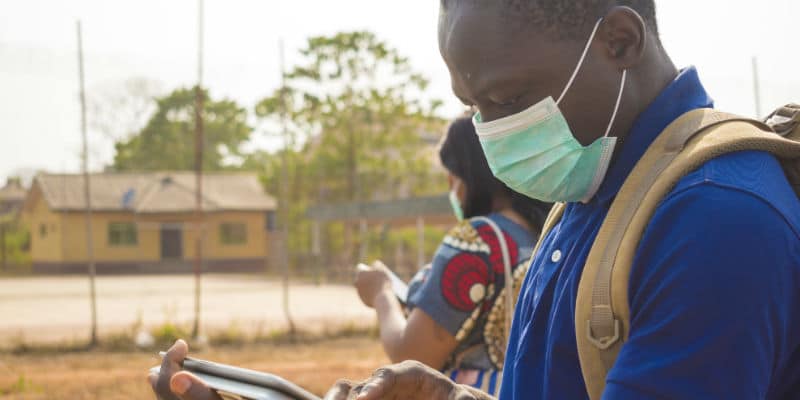An Oxfam-funded study published in April 2020 estimated that up to half a billion people could slide into poverty as a result of the pandemic. Newer studies put the estimate at around 120 million people and suggest that the pandemic has reversed “decades of progress” on extreme poverty. Indeed, there is no shortage of reports that highlight the devastating impact of the COVID-19 pandemic. But how can this be when so many countries scored highly in indices of “progress” pre-COVID? Is the unprecedented pandemic truly the cause of an almost complete reversal of decades of progress, or is the root cause of numerous economic collapses a fundamental flaw in how global developers create and define indicators of success?
How to fail your COVID test
Imagine a student takes a test at the end of a semester only to find out that he is not as competent in the material as he thought. The test was an opportunity for the student to showcase the knowledge he has acquired. For a number of possible reasons, he failed, in that he could not apply the correct solutions to the problems presented. Whatever metrics the student used in order to signal success, such as purchasing books for the course and class attendance, are rendered moot once he fails the course.
COVID-19 was a test for emerging economies that, unfortunately, many failed. Although several development metrics that signal “progress” in emerging economies, such as percent of children in school and infant mortality rates, have improved over the past couple of decades, too many emerging economies still remain unprepared to handle a minor economic setback, let alone the shock of a global crisis.
For example, while high-income countries have spent around 24% of a much higher gross domestic product (GDP) on economic stimulus packages for their citizens, middle-income countries and low-income countries have spent 6% and 2%, respectively. In addition, two-thirds of poorer countries are cutting already infinitesimal education budgets post-COVID compared to only one-third of upper-middle and high-income countries (Pre-pandemic, the average low-income country spent $48 per capita on education while high-income countries spent close to $8,500). Furthermore, more than 65% of low-income countries will likely experience, or be at risk of experiencing, debt distress.
Identifying the root cause
COVID-19’s devastating impact on the global economy, especially emerging economies where hundreds of millions of people struggle with basic needs, is a symptom of a much deeper problem than the pandemic itself. The fact that the virus has reversed decades of “development progress” signals that past progress was precarious at best. Just like the student who thinks he’s making progress on a subject until the test proves otherwise, unfortunately, too many development stakeholders celebrated a false sense of progress.
And just like the student, development stakeholders could treat the test as a bad experience incited by unprecedented hard questions and hope that this kind of test will never happen again. However, the risk of further economic collapse and widespread poverty is always a possibility, since the precedent has been set but unaccounted for.
Or, the student could change his study habits, get help, and do better when the next test inevitably rolls around. Like the student, development stakeholders could change not only what progress looks like, but also what metrics they use to measure progress.
Changing the paradigm from pushing to pulling
Only with better metrics of progress can development stakeholders help ensure that, even in the face of unprecedented struggle, countries achieve prosperity. But how can these stakeholders create these more effective indices?
In our book, The Prosperity Paradox: How Innovation Can Lift Nations Out of Poverty, my co-authors and I explain the difference between two development strategies: pushing vs. pulling. Push strategies are often driven by the priorities and expertise of their originators—typically experts in a particular field of development—and therefore generate solutions that are recommended to emerging economies. Much of the development industry operates this way. For example, too many push strategies are focused on improving development metrics like the ones mentioned above: school attendance, clinics built, and children vaccinated. Although an improvement in these metrics has some impact, the impact is typically temporary and unsustainable.
Pull strategies are different in that they originate from innovators on the ground who are responding to the struggles and experiences of everyday consumers or specific market demands. Pull strategies also have more of an investigative or inquisitorial approach to problem-solving as opposed to a more advocative or assertive approach. In other words, purveyors of pull strategies don’t go into a region with “the answer.” Instead, they go in with questions; have a deep desire to understand people, communities, and their problems; and develop metrics of progress based on that population’s specific circumstances. In this video, I describe how these two strategies couldn’t be more different.
Words such as “unprecedented” and “devastating” have been widely used to describe the pandemic. But as the world begins the slow process of recovery, the question we must now ask is what do we do moving forward? Will economic development stakeholders listen to the feedback the pandemic is providing and change the way development is practiced? Or will they double down their efforts and spend significantly more resources on improving indices that will do little to help countries respond when the next crisis arrives? The only thing that could be worse than the pandemic-induced stress, pain, and hardship for millions of people would be not learning from it and choosing to continue business as usual. Making a conscious effort to do development differently and to develop better success metrics, can help ensure that global prosperity becomes an enduring reality rather than an elusive dream.



